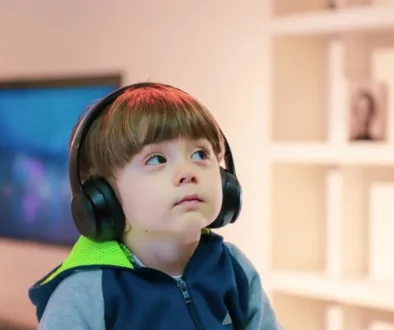Understanding the ABA Principles and How They Help Treat Autism
Facing the challenges of raising a child with autism can often feel like you’re navigating through a thick fog, unsure of where the path leads. Each step, each decision, feels weighted with uncertainty. But what if there was a compass to guide you through?
Enter the world of ABA principles, a beacon of hope that shines through the mist by offering clarity and direction. Applied Behavior Analysis (ABA) isn’t just a treatment methodology. It’s a lifeline for families grappling with Autism Spectrum Disorder (ASD).
This article is your gateway to understanding how ABA principles can transform lives by offering practical strategies and hope. By embracing the insights and techniques of ABA, you’re taking the first step towards a brighter future for your child. Read on to explore how ABA principles make a profound difference by guiding each child towards their fullest potential.
Overview of Applied Behavior Analysis (ABA)
ABA therapy stands at the forefront of autism treatment. Rooted in behavior analysis, ABA is a scientific approach that applies our understanding of how behavior works to real situations.
The goal is to increase behaviors that are helpful and decrease behaviors that are harmful or affect learning. ABA therapy is highly effective in improving social, academic, and language skills in children with ASD.
At its core, ABA therapy involves understanding:
- What happens before a behavior occurs
- What happens after to influence and change that behavior
Key Principles of ABA Therapy
ABA therapy uses several key principles to help children with autism learn and grow. One of these principles is positive reinforcement, which means giving a child a reward they find enjoyable after they display a desired behavior.
This approach encourages the child to repeat that behavior in the future. For example, if a child uses words to ask for a toy and receives the toy as a result, they learn that using words is a good way to communicate their needs.
Another principle is task analysis, which involves breaking down complex skills into smaller, more manageable steps. By teaching each step one at a time and providing reinforcement for each successfully completed step, children can gradually learn and master a complex skill.
For instance, teaching a child to tie their shoes starts with simpler tasks like crossing the laces and progresses through all the steps until the child can tie their shoes independently.
Generalization is also a key part of ABA therapy. This principle involves teaching children to apply what they’ve learned in therapy to other situations.
For example, if a child learns to greet someone in a therapy session, they’re encouraged to use that greeting with different people and in various settings. This helps them to interact more effectively in their daily life.
Benefits of ABA for Children with Autism
ABA therapy offers significant benefits for children with autism. It positively impacts their communication, social interactions, and behavior.
One of the primary benefits is improved communication skills. Through ABA techniques, children learn to use words, gestures, or communication devices to express their needs and desires. It can reduce frustrations and increase their ability to connect with others.
Social interactions also improve with ABA therapy. Children learn to understand social cues, take turns, and engage in play with peers, which are crucial skills for building friendships and participating in community activities. These social skills not only help in the short term but also lay the groundwork for healthier social interactions as the child grows.
Furthermore, ABA therapy helps reduce undesired behaviors by teaching alternative, positive behaviors to take their place. For instance, instead of throwing a tantrum when upset, a child might learn to use words to express their feelings.
This approach not only makes daily life smoother for the child and their family but also supports the child’s ability to learn and thrive in various environments.
The Role of Assessment in ABA Therapy
Before starting ABA therapy, understanding each child’s unique needs is crucial. This understanding begins with a thorough assessment process.
The goal of an autism diagnosis is to identify the child’s strengths, challenges, and specific areas needing support. Through a series of evaluations, professionals gather information on the child’s behavior, communication skills, social interactions, and more.
These assessments are not one-size-fits-all but are tailored to the individual to ensure that the ABA therapy plan is as effective as possible.
The role of assessment in ABA therapy is critical. It lays the foundation for creating a personalized treatment plan that addresses the specific needs of the child. By understanding the child’s current abilities, therapists can set realistic goals and choose the most appropriate ABA techniques to help the child progress.
Implementing ABA Principles at Home and School
For ABA therapy to be most effective, the principles learned during therapy sessions should extend into the child’s home and school environments. This consistency helps reinforce the skills and behaviors being taught. Parents and educators play a vital role in this process by applying ABA principles throughout the child’s day.
At home, parents can:
- Use positive reinforcement to encourage desirable behaviors
- Break tasks into smaller steps to help the child achieve success
- Maintain a structured routine that supports learning and development
In school settings, teachers can incorporate ABA techniques to support social skills, academic achievements, and positive interactions with peers.
Collaboration between therapy providers, parents, and educators is essential for maximizing the benefits of ABA therapy. Consistent communication ensures that everyone involved understands the goals and strategies in place to allow for a unified approach to support the child’s development.
Discover the Power of ABA Principles
In a world where hope and help can sometimes seem just out of reach, the principles of ABA stand out as a proven pathway to meaningful progress for children with autism. This article has illuminated the transformative power of ABA principles and showcases their ability to unlock each child’s potential through personalized, evidence-based strategies.
At Developmental Pediatrics, we’re committed to guiding families through the complexities of autism with compassion and expertise. Our unique approach blends comprehensive assessments with tailored ABA strategies to ensure every child can thrive.
If you’re ready to take the next step in your child’s development journey, reach out to us.



